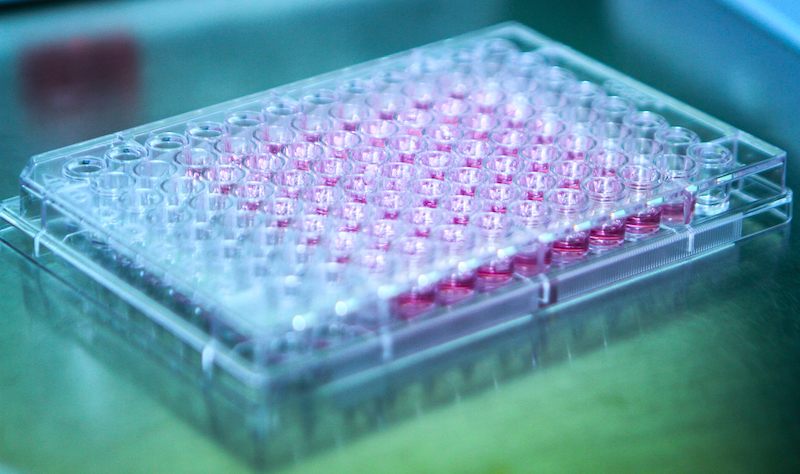
Scholar advocates expanding federal legal protections against genetic discrimination.
For two decades, police unsuccessfully searched for a Los Angeles serial killer who murdered several people over a span of three years. The killings remained a mystery until the murderer—commonly referred to as the Grim Sleeper—struck again 14 years later.
That time, authorities used a technique called familial DNA searching and found that the serial killer was related to a man who had undergone genetic testing and was already in a police database. This genetic information allowed authorities to narrow the list of suspects, ultimately leading them to a conviction for 12 murders.
Although stories such as that of the Grim Sleeper highlight the benefits that can come from increased access to genetic information, one scholar argues that stricter legal protections are needed to ensure that the information gathered through genetic testing cannot be used improperly by private firms, such as insurers, as a means to discriminate against consumers.
In a recent article, Michael Dohn of Belmont University College of Law argues that the federal law under The Genetic Information Nondiscrimination Act of 2008 (GINA) needs to be expanded to prevent genetic information from being used to determine placement in schools as well as eligibility for life, disability, and long-term care insurance.
Currently, GINA prohibits employers from using genetic test results to determine compensation or make hiring decisions, Dohn explains. The Act also bars health insurance companies from using genetic information to determine eligibility, premiums, and contributions.
Although GINA provides these legal protections from genetic discrimination in the workplace and health insurance markets, it does nothing to prevent life, disability, and long-term care insurance companies from using genetic test results to determine eligibility. Dohn points to one illustrative case in which an insurance company legally denied a young woman life insurance simply because she admitted to testing positive for a gene that indicated she had an increased risk of developing breast cancer.
Genetic test results can also be used to determine school placement. Dohn highlights a recently settled California case in which a school district transferred a student to another school after his parents submitted school forms indicating the student was a carrier for cystic fibrosis. The school determined the student should be transferred to reduce the risk that other students with cystic fibrosis would get an infection from a carrier of the disease.
If the court in this case had determined that carriers for genetic diseases were not protected under a federal law that prevents discrimination based on disability, the school district might have been able to use the student’s genetic information to decide where the student could go to school, Dohn worried.
Genetic test results that reveal an individual’s biological sex might also be used to discriminate against transgender people, although a recent U.S. Supreme Court decision held that discrimination based on gender identity in cases where a person’s gender identity may not match their biological sex is prohibited under federal law as sex discrimination.
Individuals’ genetic test results can become available for discriminatory use when consumers submit samples of saliva or cheek swabs to companies that provide direct-to-consumer genetic testing—such as 23andMe or Ancestry.com. These companies can use the genetic material in the sample to provide customers with information about their ancestry or health, such as increased risk of developing certain diseases, Dohn says. Although he recognizes that genetic information can provide consumers with “both medical and entertainment value,” Dohn warns that serious concerns still exist about who can access genetic test results.
With rapid advancements in the field of genetics, Dohn suggests that professionals could use the raw data from the genetic test results to uncover a consumer’s personal health information. Hackers could also access personal health information through cyber-attacks targeting genetic testing companies, he explains.
Some of the direct-to-consumer genetic testing companies also share consumer information with third-party research groups, Dohn says. Although the genetic testing companies remove identifying personal information before sharing, researchers have demonstrated that someone who is given an individual’s raw genetic data and basic demographic information for that individual can use this information to identify the individual.
Dohn also points out that consumers may directly provide third parties with access to their genetic information by agreeing to undergo genetic testing or by publicly sharing their test results. When consumers share their genetic information, however, they are often unaware that this information can then be used to deny them services or access to facilities, Dohn argues.
To protect consumers and prevent third parties from discriminating based on genetic information, Dohn says that GINA needs to be expanded to “fill the gaps” where consumers are left unprotected.
He recognizes that opponents to expanding GINA argue that there are few documented cases of discrimination to date, and that state laws may be able to provide additional protections if there are concerns about discrimination in areas unprotected by federal legislation. But he responds that, as technology advances and scientists better understand how genetic information relates to diseases, individuals will become more vulnerable to discrimination based on the results of genetic tests.
Without an expansion to GINA, states alone cannot protect individuals from discrimination, Dohn says. He argues that state regulations vary in how much protection to give genetic information, creating a need for Congress to impose a uniform standard capable of adapting to advancements in the field of genetics.
“The ever-increasing access to … information should … be accompanied with ever-expanding protections,” Dohn concludes.
